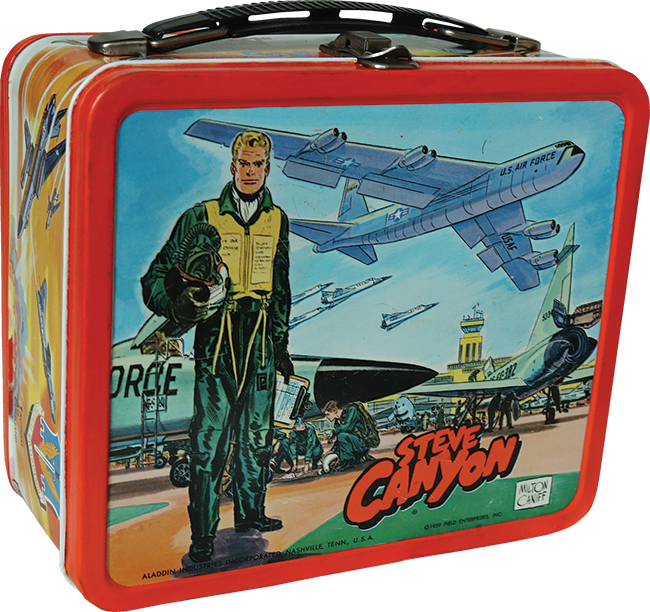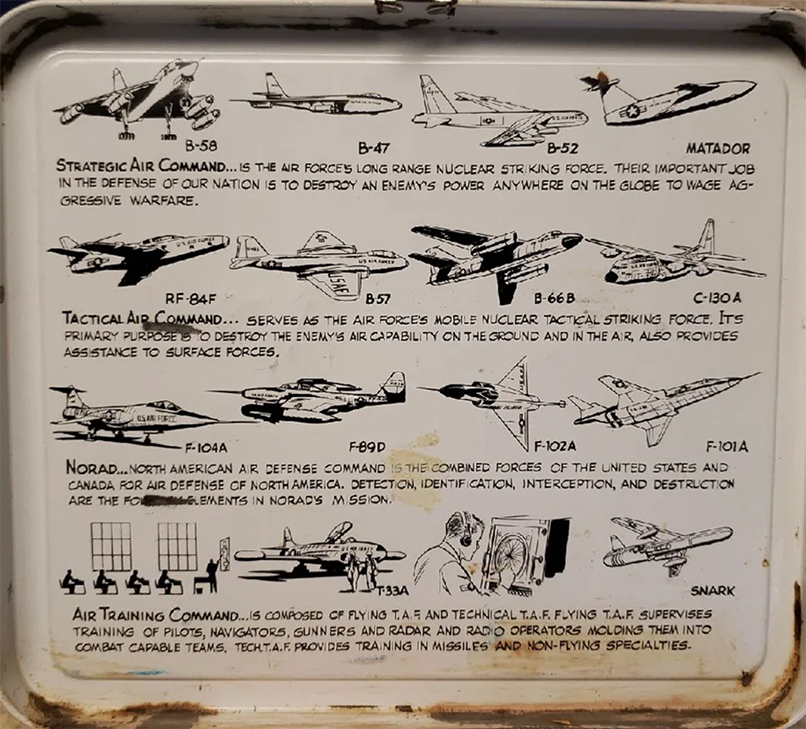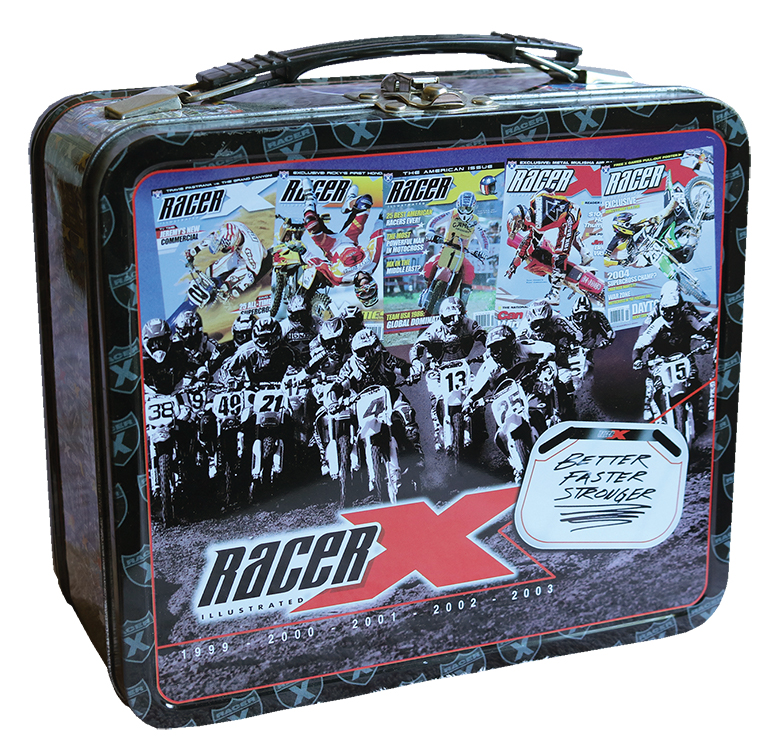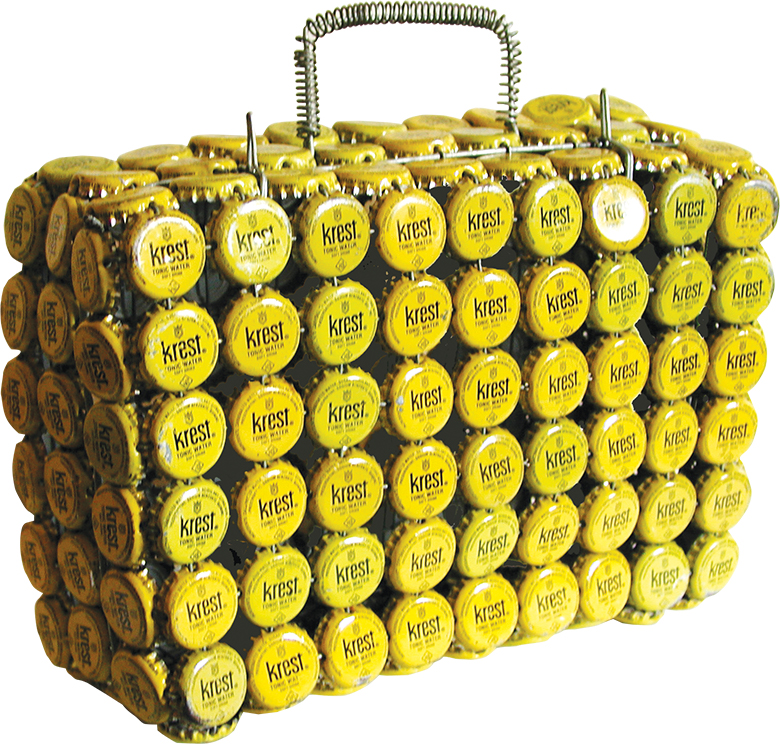David Stairs

Did you ever have to “brown bag” your lunch? If so, you know about the things that can go wrong, from torn bag to sogged-out paper from a leaky drink container.
When I was a kid I attended parochial school. The parish had to make economic choices about the school, one of which was that a gym was more important than a cafeteria. Consequently, we ate lunch at our desks before heading outside for mid-day recess on the playground.
Some kids pounded down their PBJs before rushing out to play. Others, like Eddie Hoey, combined the best things from each day into a Friday feast, and ditched the rest. I remember my Mom packing a nutritious lunch that usually included a sandwich, some chips, fruit, and, if I was lucky, a sweet like a cookie or fruit pie.
The high point of the lunch experience arrived on the day I got my first lunch box. Now, some will think of domed worker lunch pails with a thermos in the lid, and these were universal. But the hallmark of collectible lunch boxes were the stamped metal models branded with cartoon and television characters.
Between 1950 and 1987 the dominant lunch pail manufacturer in America was Aladdin, located in Nashville. Starting in the ’50s Aladdin began marketing, first, boxes featuring popular characters from radio and early media, like Hop-a-long Cassidy and the Lone Ranger. But as the decade extended, television characters began to appear.
My first and only lunch box was the 1956 Aladdin model pictured above, known as the “Errol Flynn” Robin Hood box, largely because the illustrated figure looks to be based upon Flynn’s famous 1938 turn as the dashing antihero at an archery tournament. Additional illustrations picture Robin’s wrestling match with Friar Tuck, as well as numerous confrontations with the Sheriff of Nottingham’s henchmen, and a couple references to Maid Marion. Both the lunch box and its thermos were profusely green, just in case you didn’t know that these events transpired in Sherwood Forest. I didn’t use my lunchbox every day; some days I walked home for lunch. But when I did “carry” there were no more leaky paper bags.

In 1959 one of my early heroes made it onto an Aladdin lunchbox. That year, Dean Fredericks debuted on TV as Steve Canyon, the Milton Caniff character that had been running as a syndicated cartoon strip since 1947. Caniff invented Canyon as a replacement for his Terry and the Pirates strip that he had drawn from 1934 but left in 1946 to spend the remaining 40 years of his life working on Steve Canyon. Caniff’s research was so thorough that Steve Canyon became the US Air Force’s mascot. The Aladdin box documents all aspects of US air power, from the Strategic Air Command, with its nuclear armed B-52s on constant alert, to the Military Air Transport wing, which is used to project American military power around the globe. All the illustrations were by Caniff, and his signature appears on both sides of the box. As an added treat, the inside of the top lid has 16 illustrations of Air Force vehicles and ordnance, a real reward for Caniff afficianados.

As the 1960s wore on, more and more pop culture characters appeared on Aladdin lunch boxes. Everyone from the Beatles to the Munsters, Maxwell Smart to Bruce Lee in the Green Hornet. The cowboy craze of the ’50s spilled over into the ’60s, with characters from the Wild Wild West making an appearance. But these were just as often counterbalanced by the spy-craze characters from The Man From U.N.C.L.E. or Bill Cosby’s I Spy. Many of these Aladdin products had overall embossed surfaces, a simple yet compelling effect creating an illusion of depth.

One of my friends races motocross. He shared his special lunch box, a custom memento of the sport. I haven’t seen any others like this, but I can imagine all sorts of possibilities for personally branded metal lunchboxes.
For those thinking that this was strictly a “boy thing” there were plenty of gentler characters who made it onto lunch boxes, like Flipper, Lassie, ET, or the Flying Nun. The Waltons were there, as were the Monkees. And who could ever forget Batman? Where the ’60s starred Rocky and Bullwinkle, the ’70s saw the introduction of Scooby Doo. The sort of lunch pail you had had a lot to do with when you grew up. My Gen X friends all remember having had a Star Wars pail, introduced in 1977, which was a little too late for me.
It would take a volume to document all of the lunch pails that were produced before metal buckets gave way to todays’ plastic lunch boxes, and, as with most things, there is an active world of high-end collectors and speculators driving the price of these once inexpensive items into the stratosphere.
Of course, lunch pails serve a universal need. I’ve written here before about Indian-style tiffins, a stacked column of separate small containers that allow a person to carry a complex array of food items, and there is also the traditional Japanese bento.

My final example comes from Kenya. This lunch box is also made of metal, but in this case the metal is recycled crown caps. Many beverages in Africa are still bottled in refillables, a manufacturing tradition we abandoned fifty years ago in a misbegotten move toward one-way containers. Consequently, crown bottle caps litter the ground in Africa and can be a hazard. Here a craftsman has wired dozens together into a nifty reclosable carryall. It may not have a picture of your favorite TV character, but by using only Krest caps, its creator has branded it in a unique way.
Whether your lunchtime companions were Robin Hood and Steve Canyon, or the Smurfs, chances are you have fond memories of how much better lunch tastes when it is contained in a cool lunch box. How could it be any other way?
David Stairs is the founding editor of the Design-Altruism-Project.










